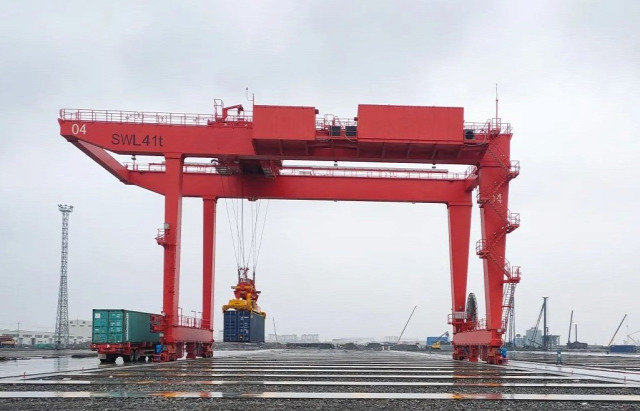Container gantry cranes play a vital role in the efficient handling of containers in ports and container terminals. These powerful lifting machines are designed to load, unload, and stack containers with precision and speed. Selecting the right container gantry crane is crucial to ensure smooth operations and maximize productivity. In this article, we will discuss key considerations for selecting a container gantry crane that meets the specific requirements of your facility.

Lifting Capacity:
One of the primary factors to consider when selecting a container gantry crane is its lifting capacity. Determine the maximum weight of the containers you will handle at your facility and choose a crane with a lifting capacity that exceeds that weight. It is important to consider future growth and potential increases in container sizes and weights.
Span and Outreach:
The span and outreach of the container gantry crane are critical factors that determine its coverage and reach. Evaluate the width of the yard or dock where the crane will operate and ensure the crane's span is suitable to cover the required area. The outreach of the crane should be sufficient to reach containers stacked in the outer rows of the yard. Consider the layout of your terminal and the stacking configuration of containers to determine the optimal span and outreach for efficient container handling.
Rail-Mounted or Rubber-Tyred:
Container gantry cranes are available in two main configurations: rail-mounted gantry (RMG) cranes and rubber-tyred gantry (RTG) cranes. Rail-mounted cranes operate on rails, providing a fixed path of travel, while rubber-tyred cranes are mobile and can travel on rubber tires. Consider the layout of your terminal, available space, and operational requirements to determine the most suitable configuration for your facility.
Operational Speed and Productivity:
The operational speed of the container gantry crane directly impacts productivity. Evaluate the required container handling capacity of your facility and choose a crane with the appropriate hoisting and trolley speeds to meet those demands. Consider factors such as cycle times, container throughput, and the number of moves per hour to ensure the selected crane can handle the required workload efficiently.
Environmental Factors:
Take into account the environmental conditions in which the container gantry crane will operate. Factors such as wind speed, seismic activity, temperature variations, and humidity levels can affect crane performance and safety. Choose a crane that is designed to withstand the environmental conditions of your location and comply with relevant safety standards.
Safety Features:
Safety is paramount when operating rail mounted container gantry cranes. Look for safety features such as anti-collision systems, load monitoring systems, and emergency stop functions. These features help prevent accidents, protect personnel and equipment, and ensure safe operations in the terminal.
Maintenance and Support:
Consider the availability of maintenance support and spare parts for the selected container gantry crane. Ensure that the manufacturer or supplier provides reliable after-sales service, including preventive maintenance, repairs, and technical support. A well-maintained crane will operate efficiently and minimize downtime, leading to increased productivity in your container terminal.
Conclusion:
Selecting the right container gantry crane is essential for efficient container handling operations in ports and container terminals. By considering factors such as lifting capacity, span and outreach, configuration, operational speed, environmental conditions, safety features, and maintenance support, you can choose a crane that meets your specific requirements. A well-selected container gantry crane will enhance productivity, optimize container handling operations, and contribute to the overall success of your container terminal.

